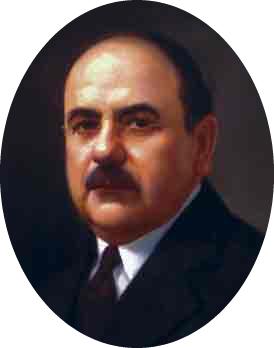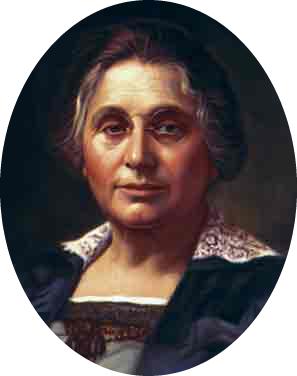
We're an all volunteer website and need your help to keep going. Here are five ways you can contribute: 1 Donate 2 Buy something 3 Submit a story 4 Volunteer 5 Advertise

New in the gift shop, virtualitalia.com logo wear and use items! 
|
PLEASE NOTE: We are experiencing unexpected
technical difficulties caused by our web host. We apologize for
the inconvenience. During your visit you may experience service
and page interruptions - we are in the process of fixing everything and hope to be
fully back on our feet soon.
working for peanuts
You may not have heard of Planters founder Amedeo Obici, but everyone knows his alter ego, the suave legume that became an advertising icon. Like many immigrants, Amedeo Obici made the arduous passage from Italy to America, started a business, and prospered. The company he founded, like the companies founded by many of his contemporaries, continues to thrive. Alas, like so many other pioneers who found success through hard work in their adopted homeland, Obici (pronounced O-bee-chee) is largely forgotten. Obici's alter ego is another story. The stoop-shouldered entrepreneur with the grave look lives on in his creation � (*) Mr. Peanut. Obici, the founder of Planters Peanuts, introduced the dapper legume in 1916, and Mr. Peanut went on to become an advertising superstar; he's even been enshrined in the Web-based Museum of Advertising Icons (www.toymuseum.com). And, while Obici's name is not part of our national lexicon, his name is well-known in Suffolk County, Virginia, where he built a grand estate that is now a luxurious banquet facility. But he was not selfish with his profits � he also used his fortune to build the region's largest hospital. It is Mr. Peanut, representative of the Planters Company � founded by Obici and fellow immigrant Mario Peruzzi in Wilkes-Barre, Pennsylvania, in 1908 � who lingers in popular culture. In a nutshell, Obici's transformation from wretched immigrant to Mr. Peanut, goes like this: Amedeo Obici was born in the small village of Oderzo, near Venice, in 1876. His widowed mother showed him letters about America sent to her by relatives who had gone ahead. When Amedeo was 11 years old, he set out to join them, arriving alone at Bush Terminal in Brooklyn. Amedeo then moved on to the harsh and grimy anthracite coal region of Northeastern Pennsylvania, where he lived with his uncle. It would take him seven years to earn the money to pay his mother's passage to America.
Wisely avoiding work as a breaker-boy in the dangerous coal workings, Amedeo labored first as a bellhop and then as a fruit stand vendor. Later, he went into business for himself, selling bags of fresh roasted peanuts for a nickel on rented sidewalk space in Wilkes-Barre. After a stint as a roving Peanut Specialist, who sold his goods from a horse-drawn wagon, in 1906 Obici went into partnership with Peruzzi and the pair incorporated the Planters Nut and Chocolate Company in 1908. Obici discovered a process by which he could roast his peanuts in oil and then blanch them to eliminate hulls and shells. The peanuts were then sold in airtight bags. The fledgling company prospered, and Obici borrowed $25,000 to open a factory in Suffolk County, closer to the peanut fields. Company headquarters remained in Wilkes-Barre, but by the 1920s, Planters opened factories in Toronto and San Francisco to meet growing demand. Obici was in the forefront of branding. Before companies branded their products, goods like peanuts were sold in bulk. Whoever sold them for less sold the most. That meant that control of a commodity's price was in the hands of retailers and consumers. Peanuts were peanuts. Branding changed this equation in every retail industry. Food entrepreneurs pointed out the unsanitary possibilities of the cracker barrel � which at the local general store might double as a loafing place for a sleeping cat! Selling their products in sealed packages, adorning these packages with brands, and advertising the virtues of those brands over others put control of pricing and distribution into the hands of manufacturers. Advertisements exhorted consumers to ask for it by name, and indeed they did. And when they asked, woe to the retailer who couldn't make the branded product available. If a merchant wanted to carry, say, Planters Peanuts, he would have to pay Planters' price. The catchier the name of the brand and the more vivid its mascot, the more popular it became � provided what was inside the package was of high quality. Obici obsessed over quality, realizing that customer loyalty was the key to long-term success. The debonair Mr. Peanut first oozed from the pen of 14-year-old Antonio Gentile, who entered a logo contest sponsored by Planters. He submitted a sketch of a little peanut person and earned $5 for his efforts. A commercial artist refined the sketch, adding a top hat, spats and a rather continental monocle, and Mr. Peanut made his debut in 1916 in an advertisement in the Saturday Evening Post.
Of course, you haven't made it until you make it in New York, and that is exactly what Mr. Peanut did. As other entrepreneurs pulled back during the Great Depression, Obici continued to pour money into advertising and erected in Times Square a blazing Mr. Peanut sign that bowed to passersby while neon nuts tumbled from the 22-foot-long bag he held in white-gloved hand. The year 1916 also brought another important character into Obici's life � his new bride, the former Louise Musante, 14 years his senior. Louise had also operated a peanut stand in Wilkes-Barre. The newlyweds took up residence on a 260-acre estate on Virginia's Nansemond River. There, Obici lived with an elegance worthy of...well, worthy of Mr. Peanut. He could afford to live in style. According to the National Italian American Federation, by 1930 Planters had four huge factories and raked in $12 million per year � no mere bag of shells. Business journals referred to Obici as "The Peanut King." When Louise died in 1938, Obici created a trust fund to finance construction of the Louise Obici Memorial Hospital in his adopted hometown of Suffolk. Before his own death in 1947, Obici made provisions for a new trust fund to benefit the hospital, which officially opened in 1951. All told, Obici donated $8 million to the hospital. Amedeo Obici's long journey from Italy to American success, from peddler to philanthropist, is not quite over. When the hospital moves into a state-of-the-art building next year, he and Louise will move with it � and not just in spirit. The two will be interred in the walls of the new hospital just as they are in the present one. Planters is now a division of Nabisco. While the original plant Amedeo Obici built in Suffolk has been demolished, 500 workers roast and package nuts at a new plant nearby that is flanked by 14 cast-iron Mr. Peanut statues. There is a small museum in the plant, but it's harder to get into than a pistachio � it's closed to the public. But Mr. Peanut was never too shy to come out of his shell � devotees can view Mr. Peanut memorabilia in the basement of Riddick's Folly, a historic home in downtown. The home is open from 10 a.m. to 5 p.m. Tuesday through Friday and 1 p.m. to 5 p.m. on Sunday. Admission costs just peanuts � in fact, it's free. Amedeo Obici, inspired as a child by tales of success in America, ended up creating his own success story � one that lives on in the unlikely form of an advertising symbol known around the world. (*) Mr. Peanut is a registered trademark of Planters Peanuts, a division of Nabisco.
|
© 1998-2005 by virtualitalia.com unless otherwise noted



